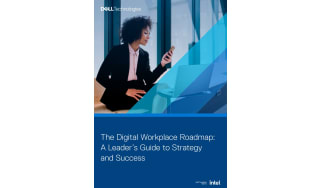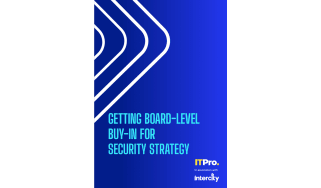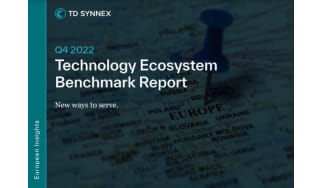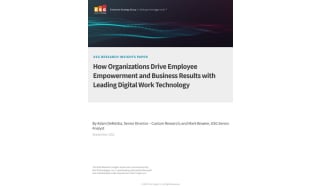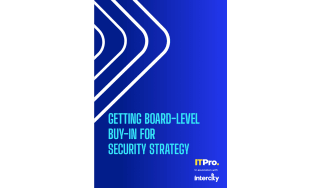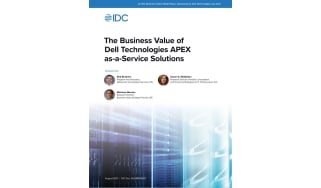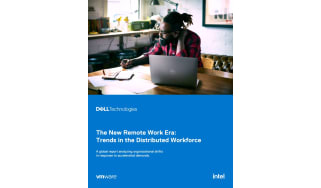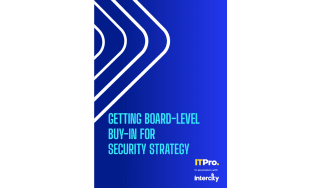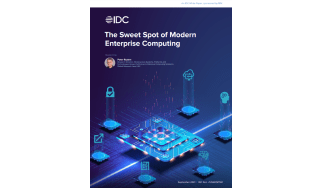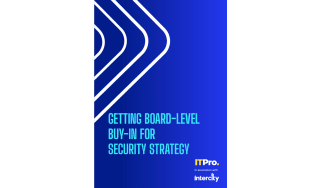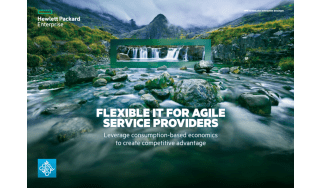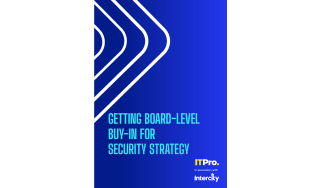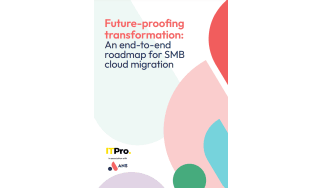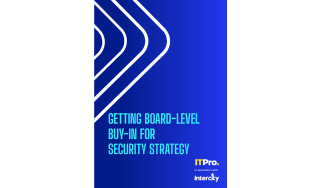Citrix was founded in the state of Texas way back in 1989. Since then it has grown into one of the largest software and cloud service providers in the world, added various lines of business and also gone from private to public and back again.
The company offers services for virtualisation, storage, networking, software as a service and cloud computing and has a remarkably varied history with multiple acquisitions, financial highs and stock market lows.
Here we will look at its history, its products, and its future.
A history of Citrix
Citrix Systems Inc is an American cloud software company specialising in developing cloud computing software and applications.
Co-founded in 1989 by Ed Iacobucci, formerly of IBM, the company initially known as ‘Citrus’ began life with five engineers and a $3 million cash investment. The company was forced to change its name after an existing company claimed a trademark violation, and so, its co-founder merged the brand with UNIX to create the name we know today.
The company’s first launch came in the form of remote access tools for hardware that ran Microsoft’s flagship operating system Windows OS. It then transitioned its product into a thin client not long afterwards, which was used among customers for remotely accessing servers. Development upon this technology was later fuelled by the acquisitions of ExpertCity and Sequoia Software in 2001.
As Citrix made further acquisitions, it expanded its remit into desktop virtualisation and servers, while ramping up the breadth of customers it serviced. The emergence of cloud technology, in particular, was an ideal launchpad for its products, particularly in the software as a service (SaaS) and infrastructure as a service (IaaS) spaces.
The firm’s GoTo range, including GoToAssist, GoToMeeting, GoToMyPC, became widely used among business customers, although Citrix decided to bundle these into a standalone business, and instead concentrated on building out its virtualisation offerings.
LogMeIn announced a merger with Citrix in 2016, in which both companies took a 50% stake in the GoTo family, with the former’s remote access and remote desktop products better integrated with the latter’s.
Over the last few years, however, the company has struggled; so much so that it was widely reported in September 2021 that it was mulling over a takeover. Unlike a number of other tech companies, Citrix had not managed to capitalise on the pandemic and the mass shift to remote work. This was apparent in 2021 when its share price fell dramatically.
Reports of a takeover were proved correct early in 2022, with private equity firms Vista Equity Partners and Evergreen Coast Capital stumping up $16.5 billion to acquire Citrix. The all-cash deal took the software firm from a publicly-traded entity to a private one and also so the new owners absorb its debts. At the time it was reported that Vista would combine Citrix with Tibco, another company it acquired in 2014.
The takeover came just a few months before a new CEO was announced. Board chairman Bob Calderoni was appointed interim CEO and president following the departure of David Henshall, who had held both roles since 2017. At the time of writing, Calderoni was still in charge of the software company, though the ‘interim’ label suggests the company still seeks a new CEO.
The company is dual-headquartered in Fort Lauderdale, Florida and Santa Clara, California. It also has offices in Raleigh, North Carolina, Australia, India, Japan and the UK.
Citrix acquisitions
Accelerate your business with hybrid cloud
Tap into benefits of both cloud and on-premise
Citrix has completed more than 50 acquisitions over the course of its 29-year history, most of which have augmented its existing portfolio or helped expand its business, rather than them leading to any radical diversifications.
Its first purchase, eight years after it was founded, was of Australian firm DataPac, which helped Citrix get a foothold in the Asia-Pacific (APAC) region. Over the next decade, it made some critical acquisitions that would serve as the foundations of some of its key products, including Expertcity in 2004 – which brought in the GoTo suite – Netscaler in 2005, and XenSource in 2007, whose name Citrix used for its Xen-branded products, like XenApp and XenDesktop.
One of the company’s recent acquisitions was Cedexis in February 2018, which Citrix bought to to “optimise app and content performance in hybrid-multi-cloud world”, according to a statement from chief product officer PJ Hough.
The most recent acquisition, micro-apps platform Sapho, was also completed in 2018 for $200 million, with the company planning to directly feed its technology into Citrix’s products in order to heighten the ’employee experience’.
Steve Shah, VP of product management, meanwhile, said: “IT teams will be able to respond and act quicker when troubleshooting network issues, managing load across clouds, and handling capacity changes to scale with business needs. Moreover, IT can reduce network and cloud costs while providing the best end-user experience.”
Citrix also paid a reported $200 million to acquire Sapho in November last year, in a bid to bring the company’s “micro apps” into its flagship Citrix Workspace platform.
What does Citrix sell?
Citrix’s product line spans three branches; Workspace, Networking and Analytics. The company once offered remote access products under the Xen brand until it underwent a major rebranding in May 2018 just days after its annual Synergy event.
These products, formerly XenApp, XenDesktop and XenMobile renamed Citrix Virtual Apps, Citrix Virtual Desktops and Citrix Endpoint Management respectively, now fall under Citrix Workspace alongside Citrix Hypervisor, formerly XenServer, and Citrix Content Collaboration, formerly ShareFire, among other products.
Virtual Apps offers support for apps, while Virtual Desktops allows remote access to a desktop. Hypervisor is a server virtualisation platform for accessing better application and desktop performance. Endpoint Management, which also comes under that part of Citrix’s business, is the company’s mobility management solution.
Content Collaboration is Citrix’s file sync and sharing product, helping businesses share content on-premise and in the cloud with other collaborators such as colleagues and clients.
Citrix also offers a range of network products, which it acquired from Netscaler – a name also phased out in the 2018 rebranding process. Citrix Networking, the second branch, includes Citrix ADC, Citrix Web App Firewall, Citrix Gateway, Citrix Application Delivery Management, Citrix SD-WAN, and are all available to help businesses operate better whether in the datacentre, a branch, in the cloud or on mobile.
Citrix Analytics, the third branch, applies machine learning to provide user behaviour analytics and proactive security insights. This product collects data across the Citrix portfolio, generating actionable insights to enable administrators to handle user and application security threats – monitoring potential vulnerabilities across an organisation.
Citrix’s recent business performance
Citrix is a public company listed on the NASDAQ stock exchange.
Its fourth-quarter 2017 results showed 6% revenue growth year-on-year ($778 million compared to $735 million). Most of this growth was driven by its Software-as-a-Service division (up 38% year-on-year) and professional services (up 13% year-on-year).
For 2017 as a whole, annual revenue was $2.82 billion versus $2.74 billion in 2016, an increase of 3%. Once again, most of this growth came from the SaaS division (up 31% year-on-year). The company’s GAAP operating margin for the year was 20%.
In 2018, the company slightly defied analysts’ expectations of net revenue hitting between $2.86 billion and $2.88 billion, recording a full-year revenue of $2.97 billion, or a 5% increase. This manifested as a 4% year-on-year decrease in product and license revenue, but a 45% surge in subscriptions. Support and services revenue rose 2% year-on-year, meanwhile.
Its shareprice, meanwhile, climbed dramatically towards the end of 2019, finishing on an all-time-high of $128 on 23 January this year, before dipping slightly as the year continued.
Getting board-level buy-in for security strategy
Why cyber security needs to be a board-level issue
Can’t choose between public and private cloud? You don’t have to with IaaS
Enjoy a cloud-like experience with on-premises infrastructure
How organisations drive employee empowerment and business results with leading digital technology
What you can achieve with a leading approach to digital work
- SEO Powered Content & PR Distribution. Get Amplified Today.
- Platoblockchain. Web3 Metaverse Intelligence. Knowledge Amplified. Access Here.
- Source: https://www.itpro.co.uk/saas/28932/everything-you-need-to-know-about-citrix
- $3
- 2%
- 2001
- 2014
- 2016
- 2017
- 2018
- 2019
- 2021
- 7
- a
- Able
- About
- access
- accessing
- According
- Achieve
- acquire
- acquired
- acquisition
- acquisitions
- across
- Act
- added
- administrators
- After
- All
- allows
- alongside
- Although
- American
- among
- Analysts
- analytics
- and
- announced
- annual
- ANNUAL REVENUE
- Another
- APAC
- app
- apparent
- Application
- application security
- applications
- appointed
- approach
- apps
- augmented
- Australia
- Australian
- available
- back
- BAND
- before
- began
- Benchmark
- benefits
- BEST
- Better
- between
- bid
- Billion
- Blue
- board
- Bottom
- bought
- Branch
- branches
- brand
- breadth
- bring
- brought
- Building
- Bundle
- business
- businesses
- california
- Capacity
- capital
- Cash
- ceo
- chairman
- change
- Changes
- charge
- chief
- chief product officer
- Choose
- claimed
- Clara
- client
- clients
- Climbed
- Cloud
- cloud computing
- CLOUD TECHNOLOGY
- Co-founder
- Coast
- collaboration
- colleagues
- combine
- Companies
- company
- compared
- Completed
- computing
- Concentrated
- content
- continued
- Costs
- course
- cover
- create
- critical
- Customers
- cyber
- cyber security
- data
- David
- Days
- deal
- decade
- decided
- decrease
- delivery
- desktop
- developing
- Development
- digital
- directly
- Division
- dramatically
- drive
- driven
- Early
- ecosystem
- ed
- emergence
- Employee
- empowerment
- enable
- Endpoint
- Engineers
- entity
- equity
- Event
- Evergreen
- everything
- evolution
- exchange
- existing
- Expand
- expanded
- expectations
- experience
- Fall
- family
- female
- few
- File
- financial
- firewall
- Firm
- firms
- First
- flagship
- florida
- following
- form
- Former
- formerly
- Fort
- Foundations
- Founded
- from
- further
- future
- GAAP
- gateway
- generating
- get
- GoTo
- grown
- Growth
- guide
- handle
- Handling
- Hardware
- Held
- help
- helped
- helping
- Highs
- history
- hitting
- holding
- However
- HTTPS
- Hybrid
- IBM
- ideal
- image
- in
- includes
- Including
- Increase
- india
- initially
- insights
- instead
- integrated
- investment
- issues
- IT
- January
- Japan
- Key
- Know
- known
- Label
- largest
- Last
- Last Year
- launch
- Launchpad
- leader
- leading
- learning
- License
- Life
- Line
- lines
- Listed
- load
- Long
- Look
- looking
- Lows
- machine
- machine learning
- made
- major
- managed
- management
- Management Solution
- managing
- Margin
- Market
- Mass
- max-width
- Meanwhile
- Merger
- micro-apps
- million
- Mobile
- mobility
- monitoring
- months
- more
- most
- multiple
- name
- Nasdaq
- Need
- needs
- net
- net revenue
- network
- networking
- New
- New CEO
- next
- North
- north carolina
- November
- number
- offered
- Offerings
- Offers
- Officer
- offices
- ONE
- operate
- operating
- operating system
- optimise
- order
- organisation
- Organisations
- OS
- Other
- owners
- paid
- pandemic
- part
- particular
- particularly
- partners
- performance
- planning
- platform
- plato
- Plato Data Intelligence
- PlatoData
- portfolio
- potential
- price
- private
- Private Equity
- Proactive
- process
- Product
- product management
- Products
- professional
- proved
- provide
- providers
- providing
- public
- purchase
- quicker
- radical
- raleigh
- ramping
- range
- rebranding
- recent
- recording
- reduce
- region
- remote
- remote access
- remote work
- Reported
- Respond
- Results
- revenue
- revenue growth
- roles
- ROSE
- SaaS
- Said
- Santa
- Scale
- Screen
- Second
- security
- Security threats
- Seeks
- sell
- September
- Sequoia
- serve
- service
- service providers
- Services
- Share
- sharing
- shift
- since
- smartphone
- So
- Software
- software as a service
- solution
- some
- spaces
- spans
- specialising
- stake
- standalone
- State
- Statement
- Still
- stock
- Stock Exchange
- stock market
- storage
- Strategy
- subscriptions
- such
- Suggests
- suite
- support
- surge
- synergy
- system
- Systems
- Tablet
- takeover
- teams
- tech
- tech companies
- Technology
- texas
- The
- The State
- the UK
- the world
- Third
- this year
- threats
- three
- time
- Title
- to
- today
- tools
- towards
- trademark
- true
- Uk
- under
- unix
- User
- various
- Versus
- VIOLATION
- Virtual
- Vulnerabilities
- web
- whether
- which
- while
- Whitepaper
- WHO
- widely
- will
- windows
- woman
- Work
- Workplace
- world
- would
- writing
- XEN
- year
- years
- Your
- zephyrnet


